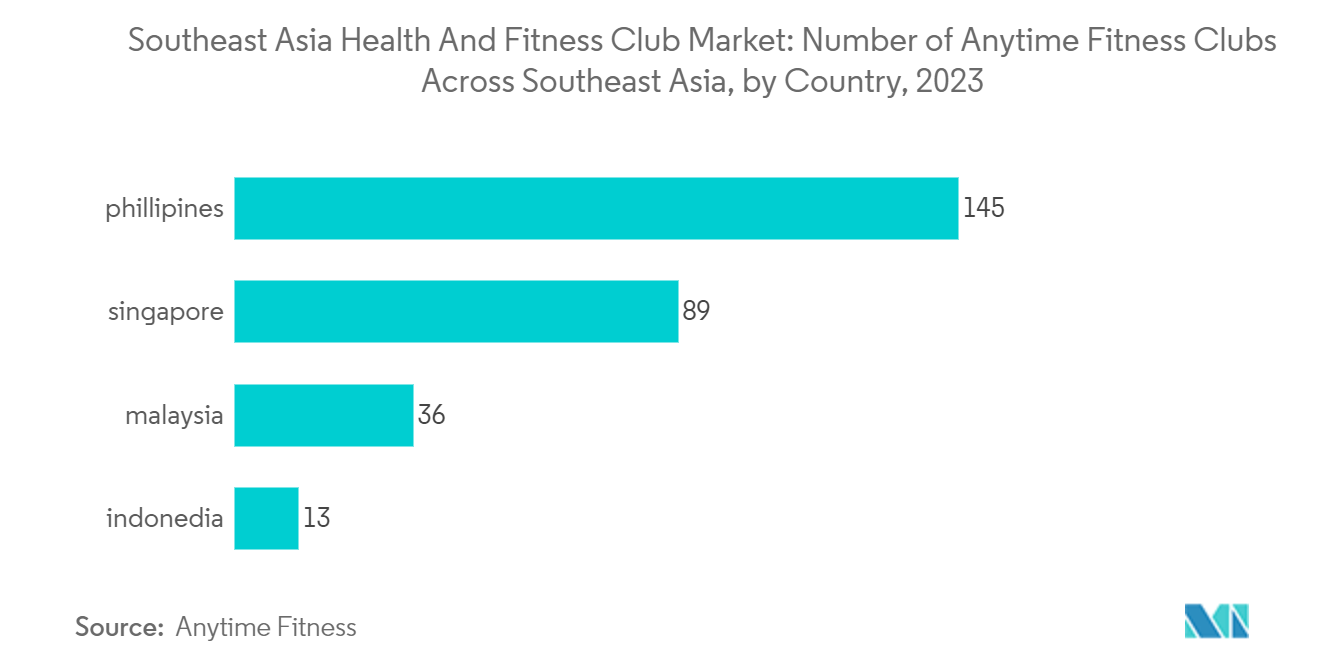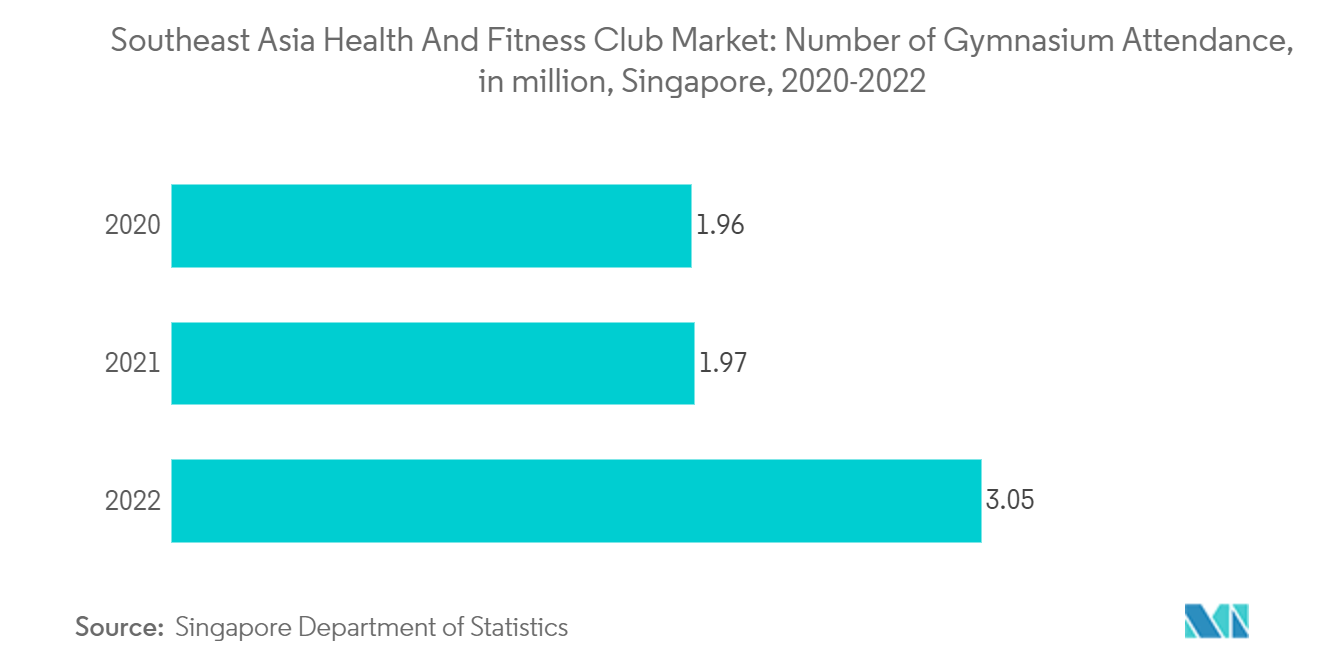Market Trends of Southeast Asia Health And Fitness Club Industry
Inclination Toward a Healthy Lifestyle
With rising incidences of lifestyle diseases, Southeast Asian consumers recognize the importance of preventive health measures. Therefore, individuals are taking proactive steps to prioritize physical well-being and actively seek avenues like fitness clubs to incorporate structured workout routines into their daily lives. For instance, according to Sport Singapore, a survey showed that 74% of Singapore consumers exercised at least once a week in 2022, a jump from 54% in 2015. Fitness campaigns at workplaces and fitness centers by sports authorities encourage individuals to workout, supporting the growth of the health and fitness club market. For instance, in June 2022, 3M partnered with the Sports Authority of Thailand (SAT) to premier its “3M Moves” initiative in Thailand to encourage Thai consumers to focus on their health and exercise more under the concept “Move More, Give More.”

Singapore Dominates the Market
Growing awareness about the importance of a healthy lifestyle and preventive healthcare is driving individuals in Singapore to join fitness clubs to maintain and improve their overall well-being. According to the World Bank, the per capita spending on healthcare in Singapore is estimated to reach USD 2,202.1 by 2028 compared to USD 1,681.8 in 2023. With the rising disposable incomes, more people can afford gym memberships and wellness services, contributing to the growth of health and fitness clubs. For instance, according to the Singapore Department of Statistics, the average monthly household income per household member in Singapore accounted for SGD 4,478 in 2022 compared to SGD 4,115 in 2019. This data reflects the increased spending power of the consumer, of which healthcare expenditure is a focal part, leading to an increase in the health and fitness market.


